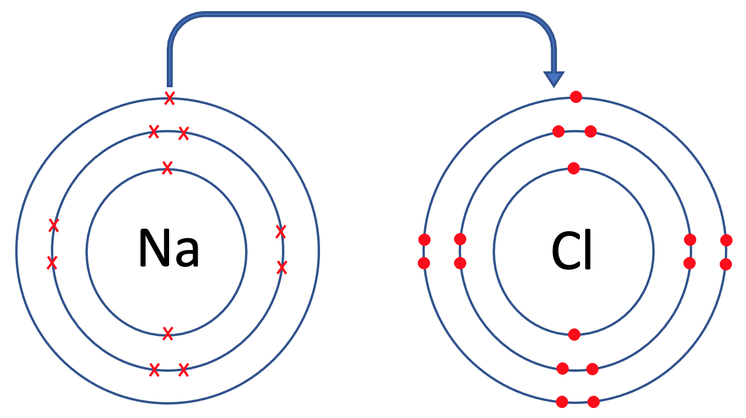What are the two main parts of the nervous system?
Central Nervous System (CNS) and Peripheral Nervous System (PNS)
What is the difference between osmosis and diffusion?
Both osmosis and diffusion involve the movement of particles. However, osmosis specifically refers to the movement of water across a semi-permeable membrane, while diffusion can involve the movement of any particle from an area of high concentration to an area of low concentration.
Osmosis does not require energy, whereas diffusion can be passive (not requiring energy) or facilitated (requiring energy).
What is static electricity?
Static electricity is electricity at rest.
Static electricity is the buildup of electric charges on the surface of non-metal materials (non-conductors, insulators) such as plastic, paper etc.
What are the key steps of the scientific method?
Ask a question/Specify a problem
Formulate a hypothesis
Test hypothesis
Analyse the data
Draw conclusion
What are the main parts of the CNS?
Brain and Spinal Cord
Label the Medulla Oblongata, the Cerebrum and the Cerebellum.
:background_color(FFFFFF):format(jpeg)/images/library/14006/gb3g875wc16BYZDIAP6c7g_Cerebellum_1.png)

Give the following information for Na and Cl:
Atomic number, Neutrons, Protons, Electrons, Electronic Configuration
Na
AN: 11, Protons: 11; Neutrons: 12, Electrons 11, EC 2, 8, 1
Cl
AN: 11, Protons: 17, Neutrons: 18, Electrons 17, EC 2, 8, 7
How is static electricity produced?
It is produced by vigorously rubbing two different dry non-metals together (Friction).
Differentiate between dependent and independent variables in an experiment.
The independent variable causes the change, while the dependent variable shows the effect of that change.
What does the peripheral nervous system consist of?
A complex network of nerves that extends from the CNS to all parts of the body.
What is the function of the circulatory system?
The function of the circulatory system is to transport blood throughout the body. This blood carries oxygen, nutrients, hormones, and waste products.
Show the ionic bonding between Sodium and Chlorine.

What is an electrical insulator? Give two examples.
An insulator is a material that does not conduct electricity well and resists the flow of electrical current.
Examples: any two non-metals such as glass, rubber
What is an independent variable?
- The variable that you intentionally change/manipulate or control in an experiment.
- It's the factor you believe will cause an effect on something else.
- Example: In an experiment testing the effect of light on plant growth, the amount of light each plant receives would be the independent variable. You might have groups of plants receiving different amounts of light (e.g., 0 hours, 6 hours, 12 hours).
What is the function of the Cerebellum?
The cerebellum, one of the three main parts that make up your brain, is responsible for coordinating movement and balance.
Name the four chambers of the heart.
Left Atrium
Right Ventricle
Left Ventricle
Right Atrium
Balance the following equations.
K + Cl2 → KCl
Na + O2 → Na2O
H2 + F2 → HF
2 K + Cl2 → 2 KCl
4 Na + O2 → 2 Na2O
H2 + F2 → 2 HF
What is an electrical conductor? Give two examples.
A conductor is a material that conducts electricity well.
For example: any two metal such as copper, aluminium
What is a dependent variable?
- The responding variable you measure or observe to see how it's affected by the independent variable.
- It's the outcome you expect to change depending on the independent variable.
- Example: In the plant growth experiment, the height of the plants after a certain period would be the dependent variable. You'd measure the height to see if there's a difference in growth based on the amount of light received.
What is the function of the cerebrum?
The largest part of the brain. It is the main controlling centre for the whole body. It allows us to think, plan and remember.
Besides the heart, name two components of the circulatory system.
Besides the heart, two components of the circulatory system are arteries and veins. Arteries carry blood away from the heart, while veins carry blood back to the heart.
What is the formula for Sodium nitride, Potassium oxide, Silicon chloride & Magnesium sulfide?
Sodium nitride - Na3N
Potassium oxide - K2O
Silicon chloride - SiCl4
Magnesium sulfide - MgS
Francine rubbed her pen with her uniform, then the pen attracted paper pieces. Explain what happened and the charges involved.
When francine rubbed the pen with her uniform, friction caused electrons to transfer from the uniform to the pen. This made the pen negatively charged.
When the pen is placed near the small paper pieces, it induces a positive charge on them.
Opposite charges attract, so the negatively charged pen attracted the positively charged pieces of paper.
Define hypothesis.
A hypothesis is a prediction about the outcome of an experiment based on your current knowledge and understanding.
A testable and falsifiable statement about a phenomenon.
Use these words to fill the spaces as you write the sentence.
( stimuli, brain, sound, light, sensory, impulses )
_____________ cells in the organs respond to different___________.
They send nervous _______________ along nerves to the spinal cord or
___________________. Our eyes focus _____________ waves and our ears
respond to ____________________waves.
Sensory cells in the organs respond to different stimuli.
They send nervous impulses along nerves to the spinal cord or brain.
Our eyes focus light waves and our ears respond to sound waves.